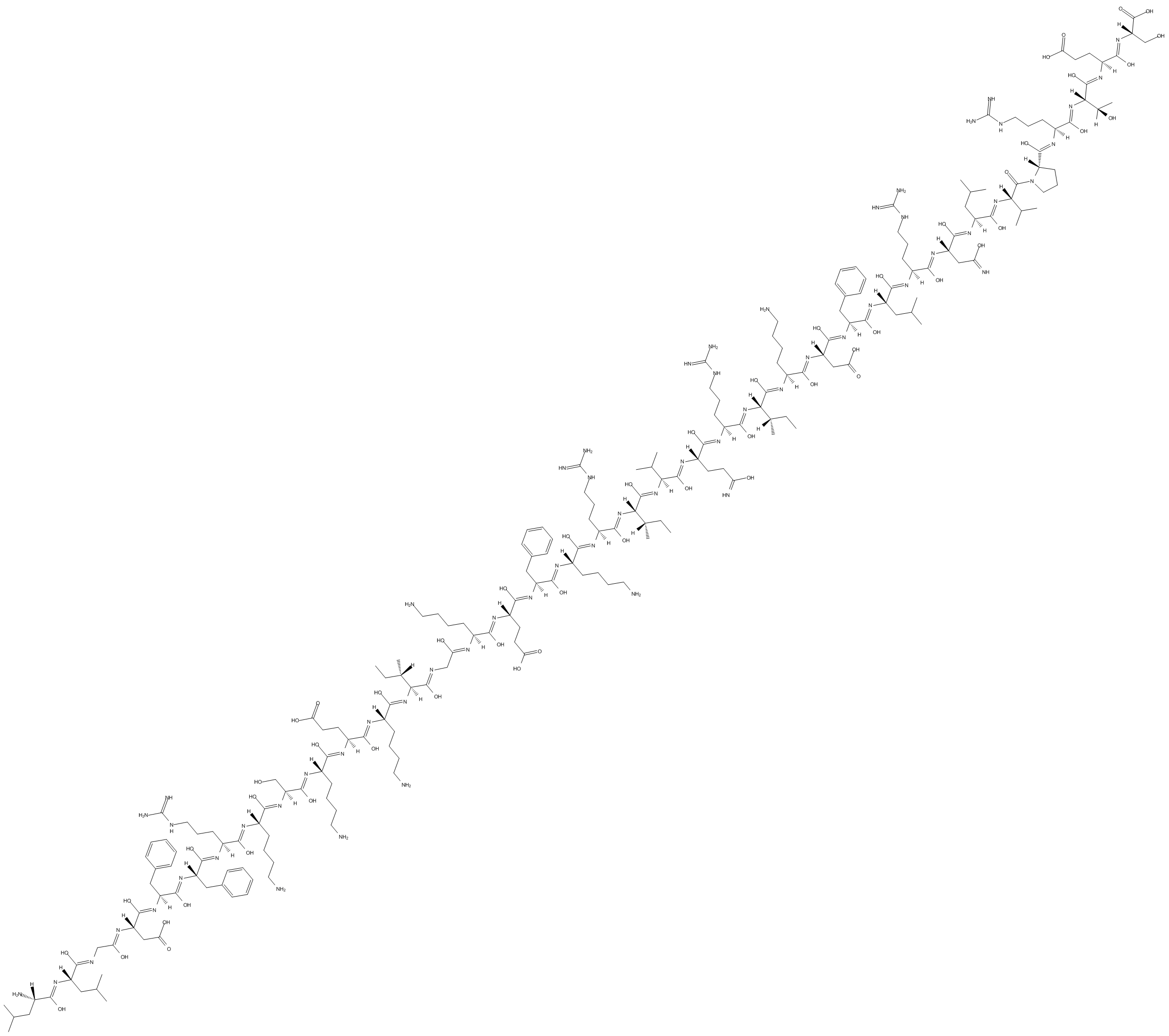LL-37 (trifluoroacetate salt) (Synonyms: CAP-18, hCAP-18, Cathelicidin, FALL-39) |
| Katalog-Nr.GC14377 |
LL-37 (Trifluoracetatsalz) ist ein 37-Aminosäuren langes, amphiphiles, aus Cathelicidin abgeleitetes antimikrobielles Peptid, das ein breites Spektrum an antimikrobieller Aktivität aufweist.
Products are for research use only. Not for human use. We do not sell to patients.

Cas No.: 154947-66-7
Sample solution is provided at 25 µL, 10mM.
LL-37 contains 37 amino acid residues with the first two leucine residues (L1LGDFFRKSKEKIGKEFKRIVQRIKDFLRNLVPRTES37) and mostly exists in epithelial cells and neutrophils.
In vitro experiment it shown that treatment with 4 and 10 μM LL-37 reduced both the number and viability of human osteoblast-like MG63 cell.[2] In vitro, the pretreatment of pMSCs with 1 and 10 μg/mL of LL-37 had not effect on the migratory cells ability. But the pretreatment with 1 μg/mL of LL-37 increased the migratory potential of pMSCs after 48 h.[4] In vitro study it indicated that at 1 µmol/L concentrations of LL-37 for 24 hours, LL-37 prevented LPS-induced stimulation of MCP-1 expression analyzed both on transcript and on protein levels, but had no effect on toll-like receptor (TLR)2 and TLR4 transcript expression. In the meanwhile, treatment with 0.1 and 1 µmol/L LL-37 for 60 minutes in PDL cell induced immunoreactivity for LL-37.[5]
In vivo study it suggested that treatment with 2 μg/mouse of LL-37 intravenously improves the survival of CLP septic mice in a dose-dependent effect. LL-37 ameliorates the level of ectosomes with higher antibacterial potential, result in reducing the bacterial load in CLP mice.[1] LL-37 dose-dependently (1, 3, or 10 μg/ml) induced ectosome release from neutrophil. Injection LL-37 supressed the infiltration of polymorphonuclear cells in CLP mice, where the bacterial burden and inflammatory response are decreased.[3]
References:
[1].Nagaoka I, et al. Therapeutic Potential of Cathelicidin Peptide LL-37, an Antimicrobial Agent, in a Murine Sepsis Model. Int J Mol Sci. 2020 Aug 19;21(17):5973.
[2].Bankell E, et al. LL-37-induced caspase-independent apoptosis is associated with plasma membrane permeabilization in human osteoblast-like cells. Peptides. 2021 Jan;135:170432.
[3].Kumagai Y, et al. Antimicrobial peptide LL-37 ameliorates a murine sepsis model via the induction of microvesicle release from neutrophils. Innate Immun. 2020 Oct;26(7):565-579.
[4].Oliveira-Bravo M, et al. LL-37 boosts immunosuppressive function of placenta-derived mesenchymal stromal cells. Stem Cell Res Ther. 2016 Dec 30;7(1):189.
[5].Aidoukovitch A, et al. The host defense peptide LL-37 is internalized by human periodontal ligament cells and prevents LPS-induced MCP-1 production. J Periodontal Res. 2019 Dec;54(6):662-670.
Average Rating: 5 (Based on Reviews and 1 reference(s) in Google Scholar.)
GLPBIO products are for RESEARCH USE ONLY. Please make sure your review or question is research based.
Required fields are marked with *




















